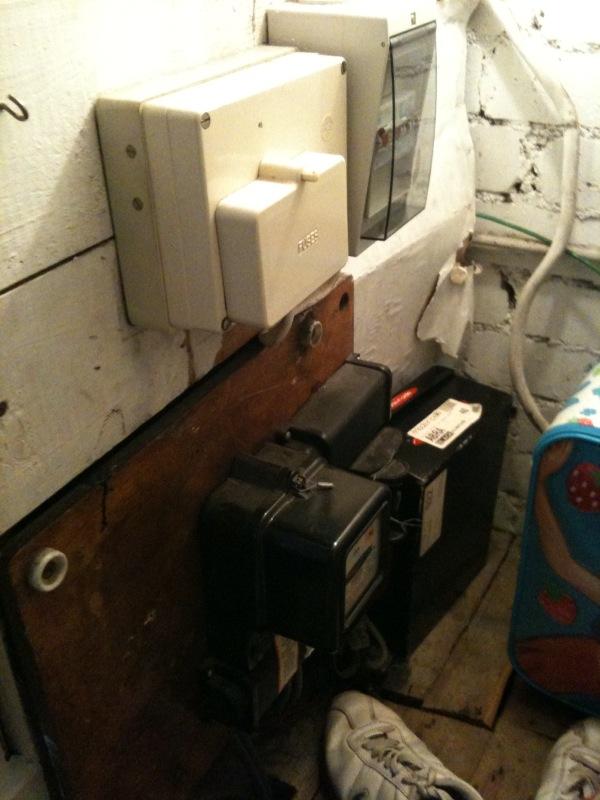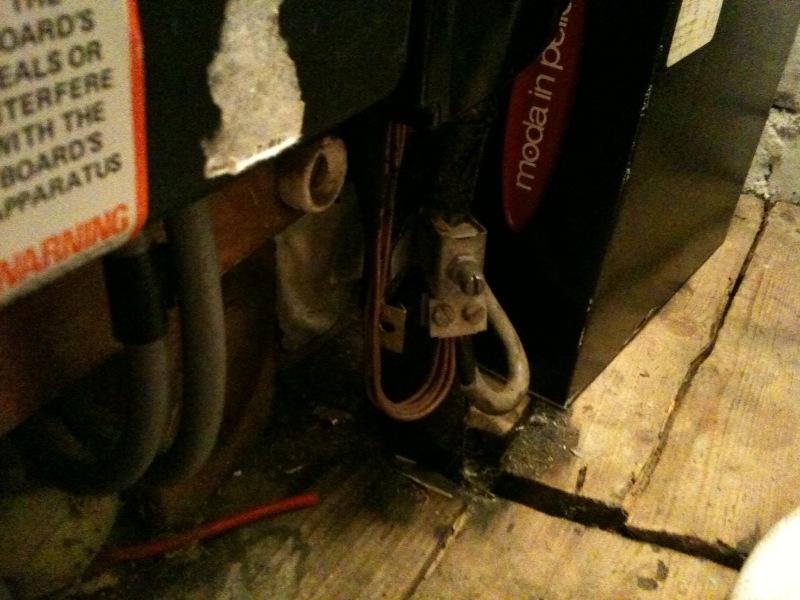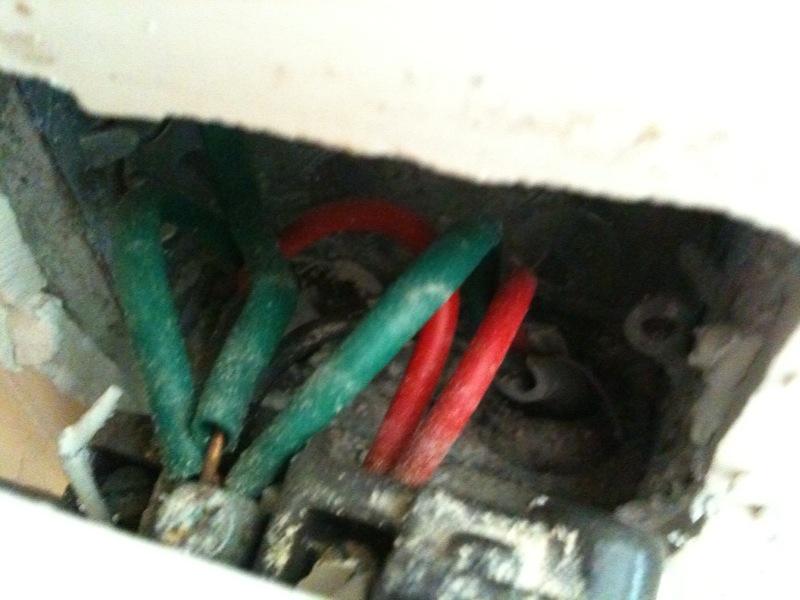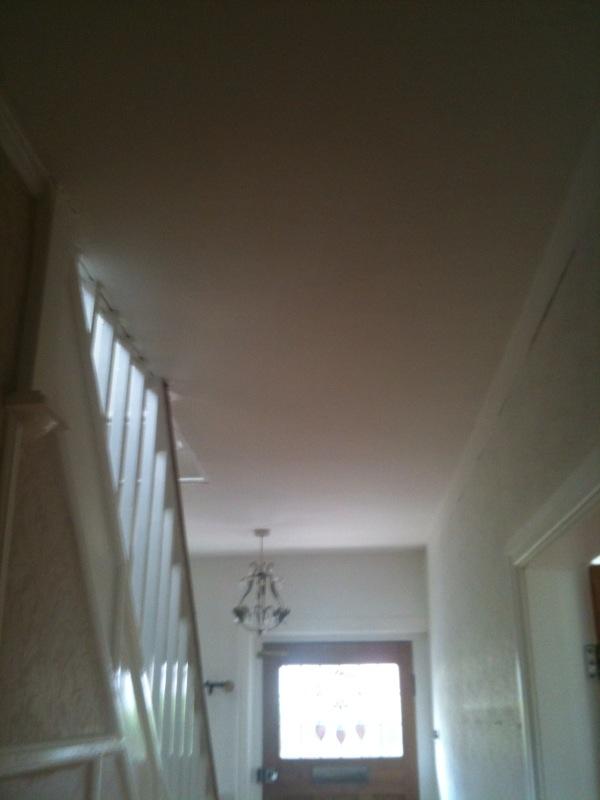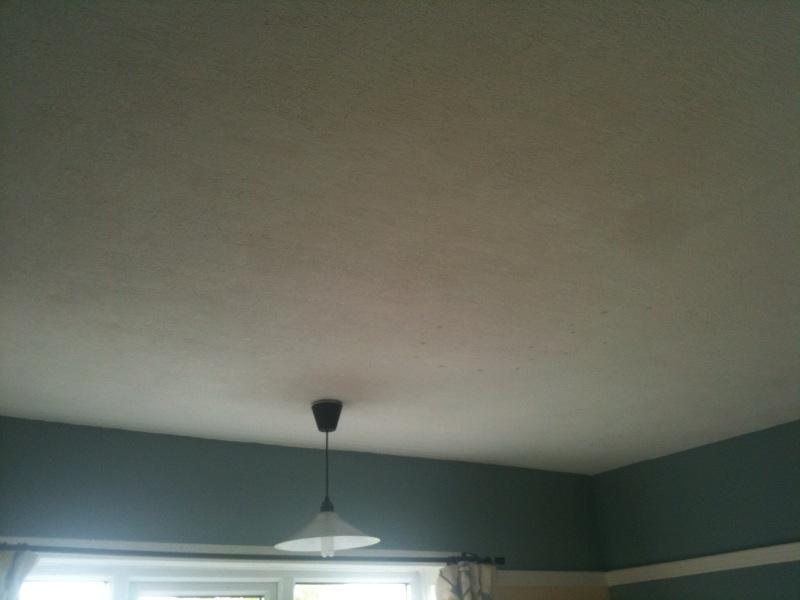I have just moved into a new house that is 1930's. The homebuyers report suggested that the elctrics are not up to current regulations. I don't know whether I need a rewire? How much would it be for a full rewire on a 3 bed house? I have attached pictures of the fuse box and wires behind one of the plugs.
You are using an out of date browser. It may not display this or other websites correctly.
You should upgrade or use an alternative browser.
You should upgrade or use an alternative browser.
1930's house do I need a rewire?
- Thread starter sirrahking1986
- Start date
Sponsored Links
That looks like cable of imperial size and they stopped selling it in the early 1970's and green sleeving stopped in 1977, so there is a good chance the electrical installation is over 40 years old - past its sell by date.
How long are you planning to stay in the house and are you planning any alterations to the electrical installation? If you are planning to stay for many years or make alterations then I would be inclined to re-wire, rather than finding you have to do it in 5 or 10 years time after your house is redecorated.
The only way to be sure is get an electrical inspection done, also known as a PIR or ECIR
How long are you planning to stay in the house and are you planning any alterations to the electrical installation? If you are planning to stay for many years or make alterations then I would be inclined to re-wire, rather than finding you have to do it in 5 or 10 years time after your house is redecorated.
The only way to be sure is get an electrical inspection done, also known as a PIR or ECIR
Was thinking of staying at least 5 year. I don't know if I can get away with adding halogen lighting and upgrade part of the electrics. I am concerned that it will make a right mess and all the plastering too. At the minute there is horrid wood chip on the wall which will probably make a right mess of the plaster underneath anyway. I need budget for all of it. What would the rough cost be for a full rewire for a 3 bed semi? Will the survey not just state the obvious that the electrics are old and will need replacing?
Send more pictures.
Sponsored Links
It is difficult to tell just from those pics.
The only way to be sure is a EICR (PIR) but my first reaction is that it might be prudent to consider rewiring and a cost of £3K might be a good starting point + or - a bit depending upon what you want.
My usual answer to "how much is a rewire these days is "about the same as a second hand car!"
The only way to be sure is a EICR (PIR) but my first reaction is that it might be prudent to consider rewiring and a cost of £3K might be a good starting point + or - a bit depending upon what you want.
My usual answer to "how much is a rewire these days is "about the same as a second hand car!"
... Will the survey not just state the obvious that the electrics are old and will need replacing?
It might make that recommendation and it might not. The inspection should provide an overall assessment of the suitability of the installation for continued use, you might find that the installation is still safe to use.
Send more pictures.
Here are some more pictures - I am looking at moving the sockets from the skirting board to the wall and adding a few more of them too. The lights up stairs are earthed but they are off centre which I assume was normal in the 30's to prevent a silhouette forming on the windows. I will ask around for a quote for a report. I think it may need rewired anyway due to extra lights (halogens in the hall way) and sockets needed or can I just add them to the existing electrics?
If you`re doing so many alterations and additions then rewire from scratch is beginning to sound the best option irrespective
Based on your photos the wiring shown probably dates from the early 70s.
The wiring itself may not need replacing as it doesn't usually deteoriate in the same manner as older wiring.
However, we have no idea if there are other problems without a proper test/inspection. There may be all kinds of things that need upgrading.
If there's a lot of accessories that need moving, and you also need extra ones added, it would make perfect sense to do a complete rewire.
Often when doing all kinds of improvements to an old system it's nearly as easy to replace the lot - though not always essential.
You need to consider how much you want to change on the installation, and get a decent electrician round to weigh up what should be done.
The wiring itself may not need replacing as it doesn't usually deteoriate in the same manner as older wiring.
However, we have no idea if there are other problems without a proper test/inspection. There may be all kinds of things that need upgrading.
If there's a lot of accessories that need moving, and you also need extra ones added, it would make perfect sense to do a complete rewire.
Often when doing all kinds of improvements to an old system it's nearly as easy to replace the lot - though not always essential.
You need to consider how much you want to change on the installation, and get a decent electrician round to weigh up what should be done.
Deleted.
- Joined
- 19 Jan 2005
- Messages
- 1,171
- Reaction score
- 41
- Country

as others have said it would be worth investing few hundred quid to get it all fully tested. It may well be fine. If so then you could get your new lights added on and just go with a fuse board upgrade - saving you lots of £
The cable itself is most likely fine. Afaict PVC cable lasts virtually forever under normal domestic loading confutions.
The fusebox should be replaced to meet current standards but that doesn't really imply a rewire in itself.
Sockets on the skirting board are less than ideal because they can stress the cable as it is tightly bent between plug and floor. You also state that you don't like the location of the light fittings. IMO if you are going to end up moving most of the sockets and most of the light fittings then you may as well rewire rather than end up with junction boxes everywhere.
The fusebox should be replaced to meet current standards but that doesn't really imply a rewire in itself.
Sockets on the skirting board are less than ideal because they can stress the cable as it is tightly bent between plug and floor. You also state that you don't like the location of the light fittings. IMO if you are going to end up moving most of the sockets and most of the light fittings then you may as well rewire rather than end up with junction boxes everywhere.
It was.I am looking at moving the sockets from the skirting board to the wall and adding a few more of them too. The lights up stairs are earthed but they are off centre which I assume was normal in the 30's to prevent a silhouette forming on the windows.
The chances are, as others have said, that with the amount of modifications and additions you want done you might as well just have new circuits put in - then you can save to cost of having an inspection done on the old stuff. Also that way all the existing circuits can be left alone while the new ones are installed - no need for the electrician to have to keep turning the power off and on - i.e. with sockets, just have the new ones put where you want, then when the time comes just remove the old.I will ask around for a quote for a report.
It would be best to get all infrastructure work like this done before you start decorating, replacing floors and floor coverings etc. If you're concerned about the cost of replastering walls, find an electrician who can do a good job of making good his chases - if you're going to be papering then that will cover up minor imperfections. If you want painted walls then textured paper first, or even heavy-duty lining paper, will hide a multitude of sins.
Think hard about where to have sockets - it's difficult to have too many, and also about what circuits to have. The items on the list below won't all apply to you, but they are worth thinking about:
- Upstairs sockets
- Downstairs sockets (or a L/R or front/rear split)
- Kitchen sockets
- Circuit for appliances
- Cooker circuit
- Non-RCD circuit for F/F
- Non-RCD circuit for CH boiler
- Dedicated circuit for hifi
- Dedicated circuit for IT equipment
- Upstairs lights
- Downstairs lights
- Lighting circuits with switches in the usual places but with 2A/5A round pin sockets at low level.
- Immersion heater
- Loft lights
- Shower
- Bathroom circuit
- Alarms
- Supply for outside lights
- Supply for garden electrics
- Supply for shed/garage
Unless you want to go to the expense of RCBOs throughout, the CU should have at least 3 sections, 2 on RCDs and one not into which you can install a mix of RCBOs and MCBs.
It can be a good idea to put all wiring in conduit for ease of future changes. And if you specify metal conduit for switch drops, or BS 8436 cable it removes the need to have RCDs on lighting circuits (apart from bathrooms).
If you live somewhere where supplies are dodgy in the winter, have the lights, the boiler supply, and a socket in each room wired to a separate CU, or a separate section in a large one, that can be supplied by an emergency generator - lights, heating, TV and a kettle/microwave make life a lot more bearable.
Flood-wiring with Cat6 or Cat6a cable is worth thinking about.
In terms of finding an electrician, as ever, personal recommendations are always the best way to find a reputable tradesman, but if you're having to go ahead without much in the way of those, or references, don't put any store by registration itself - sadly it is possible to become registered with woefully inadequate qualifications and zero practical experience. You don't have to spend long here to see people cropping up who are registered and "qualified", but who are clearly seriously incompetent in reality and who should not be charging for their services.
You are looking for someone to rewire a house, and it may surprise and dismay you to learn that it is quite possible to become a "Competent Person" without ever having done that before, and without having acquired any of the practical skills needed to do it without half-destroying your house in the process.
It's your money, £'000s of it, and you have every right to ask prospective tradesmen what their qualifications and experience are. Just being listed here is not a good enough guide. No genuinely experienced electrician, with the "full set" of C&G qualifications will mind you asking - in fact he will wish that everyone was like you.
I feel sorry for people who have been misled by training organisations and (shamefully) the Competent Person scheme organisers into thinking that a 5-day training course, a couple of trivial examples of their work and some basic understanding of how to use test equipment will make them an electrician, but not sorry enough to agree with them trying to sell their services to Joe Public.
If by that you mean 2" diameter recessed spotlights I would strongly advise against. They are actually designed to be deliberately bad at lighting up rooms, and cost a fortune to run. And are becoming more and more unpopular - could be putting off a number of buyers in 5 years timeI think it may need rewired anyway due to extra lights (halogens in the hall way)
Recessed lighting is fine, but not in small sizes - look for lights which take PL or 2D fluorescent tubes, or if you want LEDs, again a larger format such as the Philips BaseLED.
I like the separate HI Fi bit Ban 
Priorities!
Priorities!
Yup - cabled using Russ Andrews T&E which was once made very cold and was then washed in the tears of Essex virgins.
DIYnot Local
Staff member
If you need to find a tradesperson to get your job done, please try our local search below, or if you are doing it yourself you can find suppliers local to you.
Select the supplier or trade you require, enter your location to begin your search.
Please select a service and enter a location to continue...
Are you a trade or supplier? You can create your listing free at DIYnot Local
Sponsored Links

